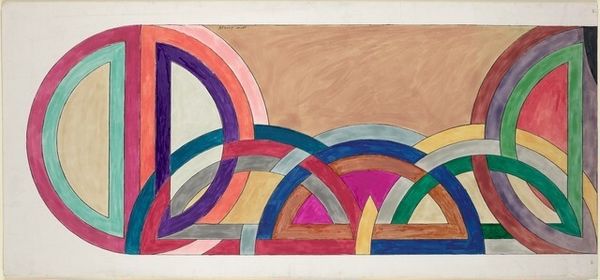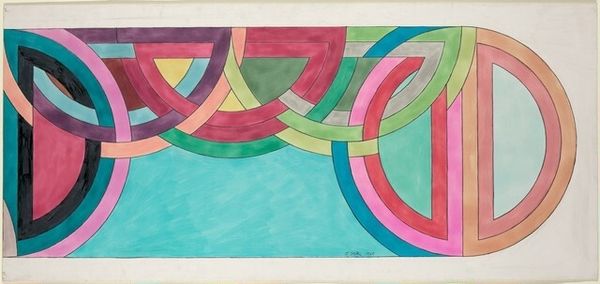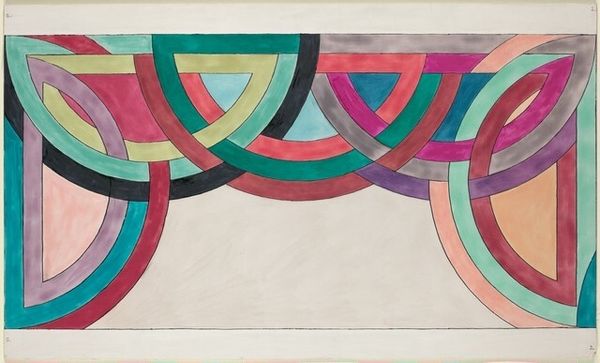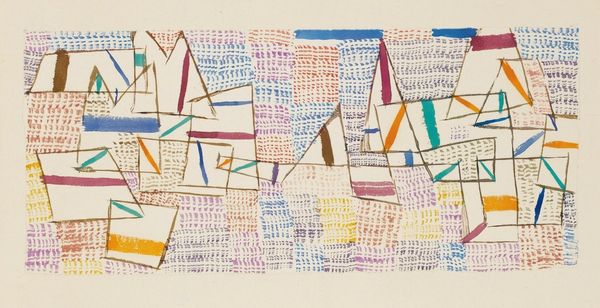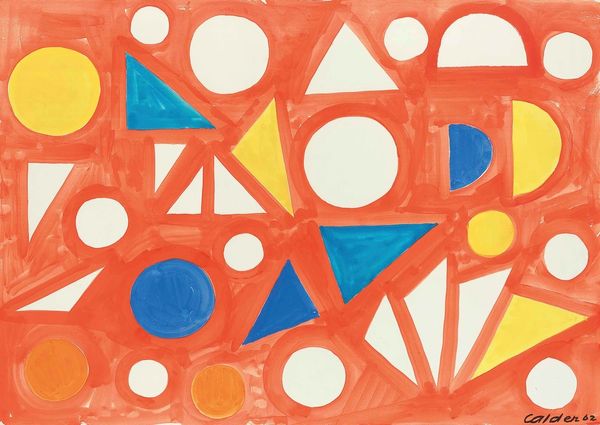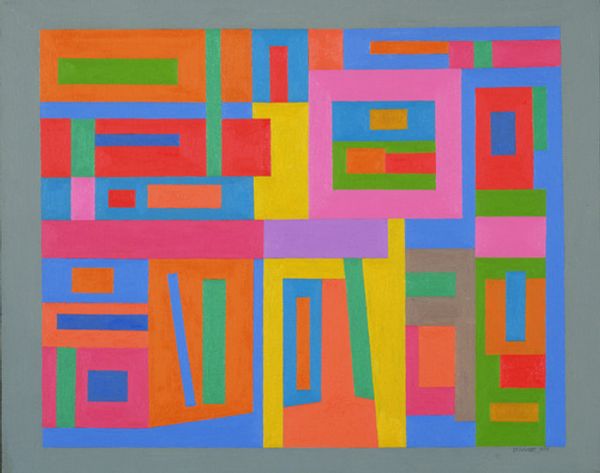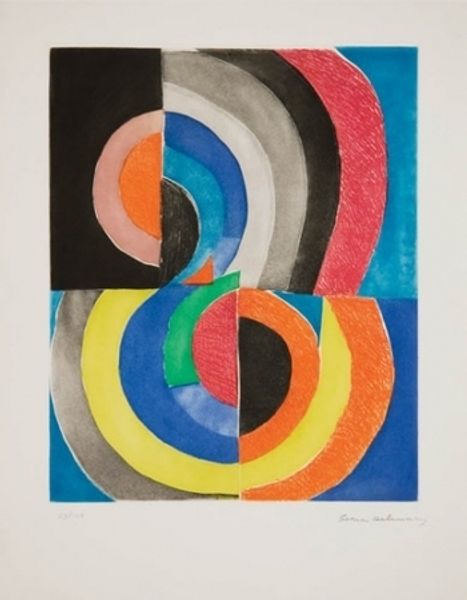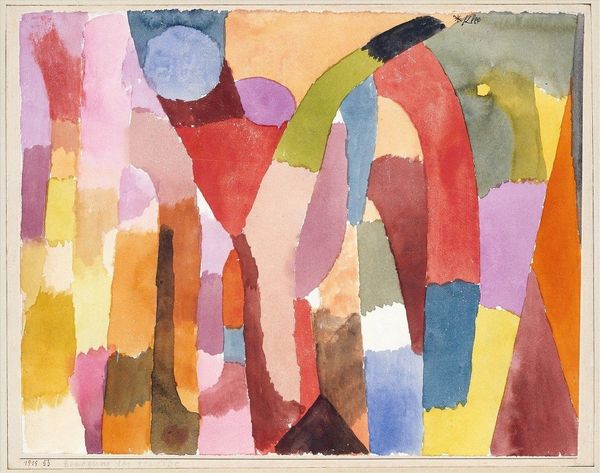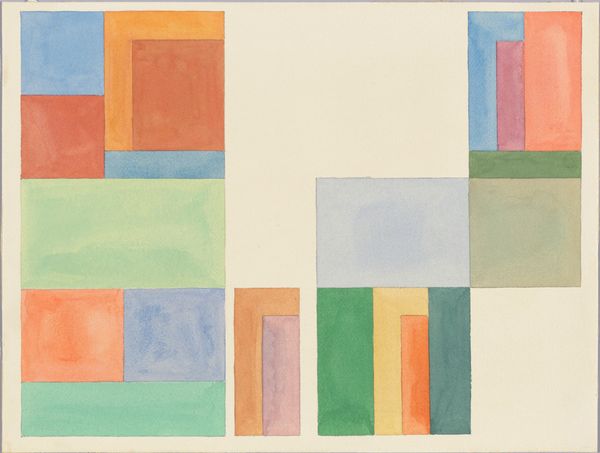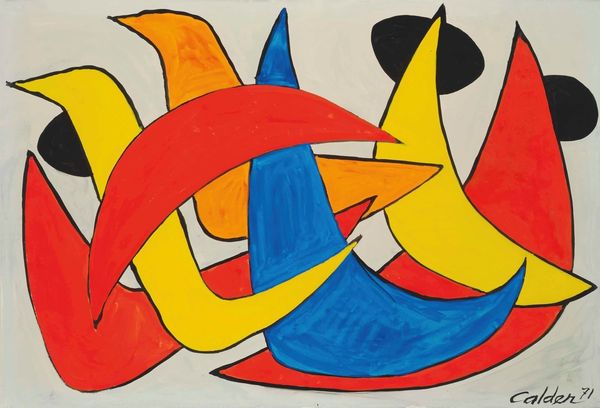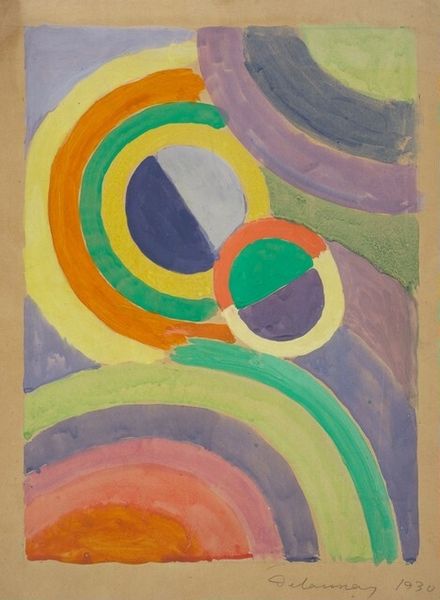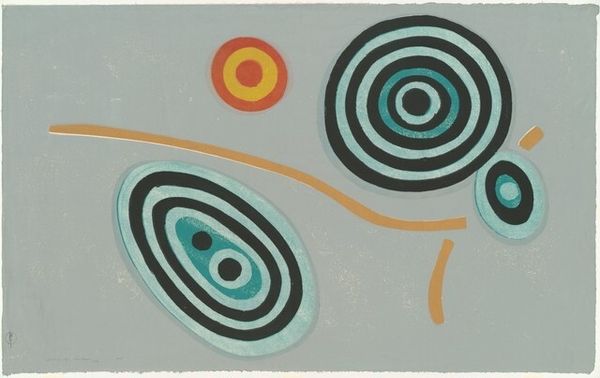![Study for Albany Mall [panel 3] by Frank Stella](/_next/image?url=https%3A%2F%2Fd2w8kbdekdi1gv.cloudfront.net%2FeyJidWNrZXQiOiAiYXJ0ZXJhLWltYWdlcy1idWNrZXQiLCAia2V5IjogImFydHdvcmtzLzA3NjliYzA5LTZkZmQtNGMyOS04MjFiLTBmOTEyZjEwMzNkOC8wNzY5YmMwOS02ZGZkLTRjMjktODIxYi0wZjkxMmYxMDMzZDhfZnVsbC5qcGciLCAiZWRpdHMiOiB7InJlc2l6ZSI6IHsid2lkdGgiOiAxOTIwLCAiaGVpZ2h0IjogMTkyMCwgImZpdCI6ICJpbnNpZGUifX19&w=1920&q=75)
acrylic-paint
#
pop art
#
acrylic-paint
#
form
#
geometric pattern
#
geometric
#
geometric-abstraction
#
line
#
modernism
Dimensions: overall: 45.3 x 75.6 cm (17 13/16 x 29 3/4 in.)
Copyright: National Gallery of Art: CC0 1.0
Curator: Welcome. We're standing before Frank Stella's "Study for Albany Mall [panel 3]", created in 1968, an acrylic on paper. Editor: It strikes me immediately as playful, almost childlike in its geometry. The semi-circular shapes remind me of rainbows or bridges repeated and intertwined. There's something intrinsically optimistic about it. Curator: That's interesting, particularly because Stella's works often emphasize the flatness of the picture plane and the objecthood of the artwork itself. He's pushing formal concerns like line, color, and shape. The repetitive use of the semi-circle and the parallel lines is paramount. Editor: Yet, isn't there an inherent symbolism in such ordered repetition? These semi-circles layered over and under could be stand-ins for universal ideas such as connection, building and growth—each color seems chosen to elicit an immediate visceral response. Curator: Visceral, perhaps, but I would argue the emotional impact is secondary to the intellectual rigor in the planning and execution. Observe how the negative space shapes are just as important. Editor: I cannot dismiss the evocation of human endeavor that rises organically in groups from the color-field earth. And even that peachy background—it whispers nostalgia or simpler times of a sunset sky or a young child's rosy cheeks. Doesn't it tug at memories? Curator: If it does, it is through pure visual construction. I agree that the relationship of figure and ground are very subtly constructed so that the work creates meaning out of the raw materials of form. Editor: So perhaps what moves me about the painting is how it transcends what Stella intends. Curator: That’s the fascinating tension between an artist's intention and our subjective interpretation, isn't it? Editor: Yes. Seeing "Study for Albany Mall," reminds me art’s intrinsic power resides in both planned structure and chance resonance.
Comments
No comments
Be the first to comment and join the conversation on the ultimate creative platform.
